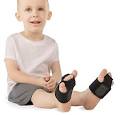Toe walking, also known as tip-toe walking, is a common gait pattern observed in young children as they learn to walk. While most cases of toe walking resolve on their own as the child grows and develops, some children may continue to walk on their toes past the age of two, causing concerns for parents. This article discusses the types of shoes that can help prevent toe walking in children, as well as the factors to consider when selecting footwear for your child.
Types of Shoes That Will Discourage Toe Walking
Flat Shoes
Flat shoes, such as sneakers or flats, provide a stable platform for the feet without placing the heels in a shortened position. This helps to keep the calves muscles in a natural position, reducing the tension on the Achilles tendon and promoting a heel-to-toe walking pattern.
Squeaky Shoes
Some footwear brands design shoes with squeakers in the heels. These shoes can serve as a fun and engaging way for children to walk, but they also provide a satisfying auditory feedback that can help them become more aware of their footsteps and naturally adjust their gait pattern to a heel-to-toe walk.
High-back Shoes
Shoes with a higher back, particularly those designed for gym use, can press up against the Achilles tendon when the child walks on their toes. This can be uncomfortable for the child and may encourage them to transition to a flatter walking pattern.
Light-up Shoes
Light-up shoes feature LED lights embedded in the soles that light up with each step. While these shoes may not directly impact toe walking, they can encourage physical activity and enjoyment of walking, which can lead to improvements in gait over time.
Choosing the Right Shoe
When selecting shoes to prevent toe walking, consider the following factors:
-
Heel Counter: Look for shoes with a firm and supportive heel counter that provides stability and helps prevent excessive ankle movement.
-
Arch Support: Ensure that the shoes you choose offer adequate arch support to maintain proper foot alignment.
-
sole flexibility: Choose shoes with a flexible sole that allows for natural movement and flexibility of the foot.
-
Proper Fit: Ensure that the shoes fit well, neither too loose nor too tight, to allow for proper foot movement and avoid discomfort.
When to Seek Professional Help
If toe walking persists in children past the age of two, consult with a healthcare professional, such as a pediatrician or physical therapist. They can assess the situation, identify any underlying causes, and recommend appropriate interventions or further evaluations if necessary.
##Choosing the right shoes can play a significant role in preventing toe walking in children. By selecting shoes that provide stability, support, and flexibility, and that fit well, parents can help their children transition to a more typical heel-to-toe walking pattern as they grow and develop. If toe walking persists, it is important to consult with a healthcare professional for further guidance and support.






